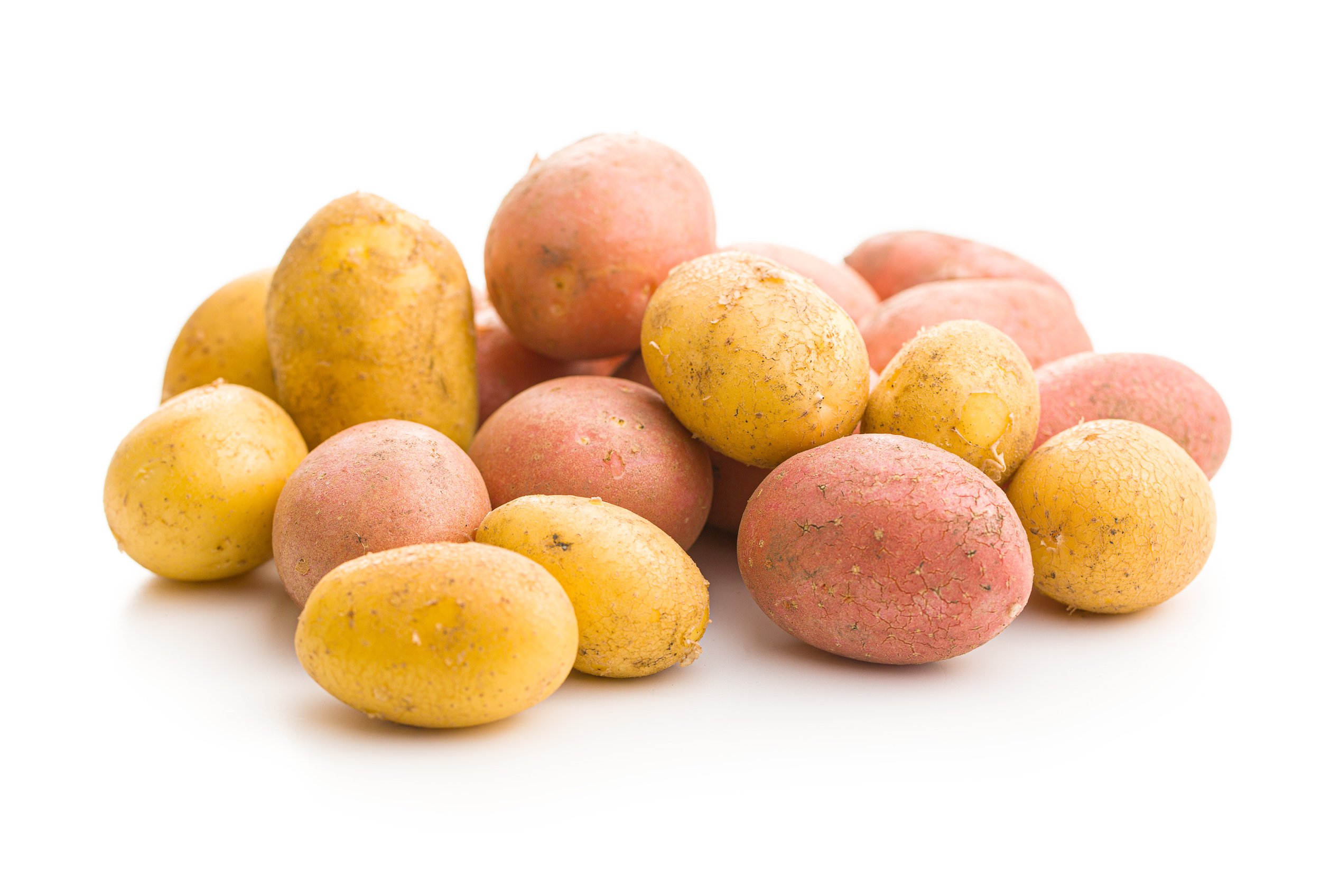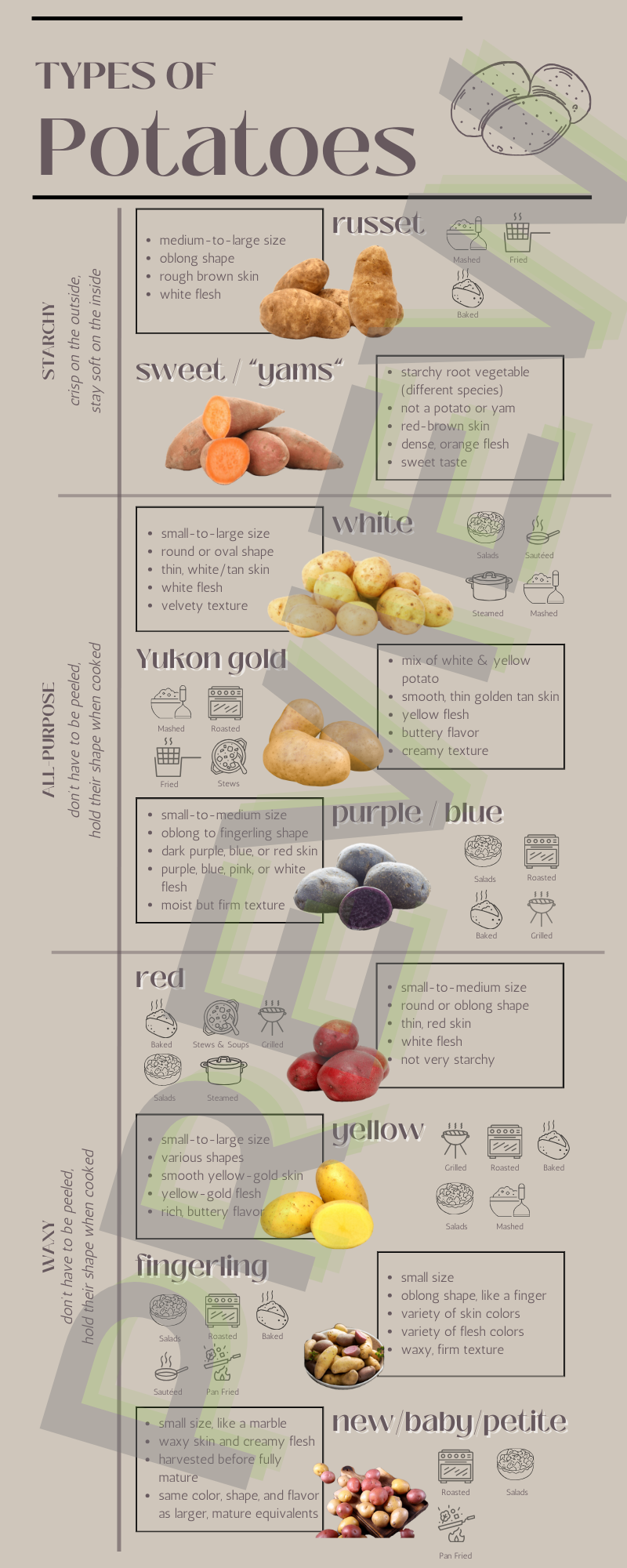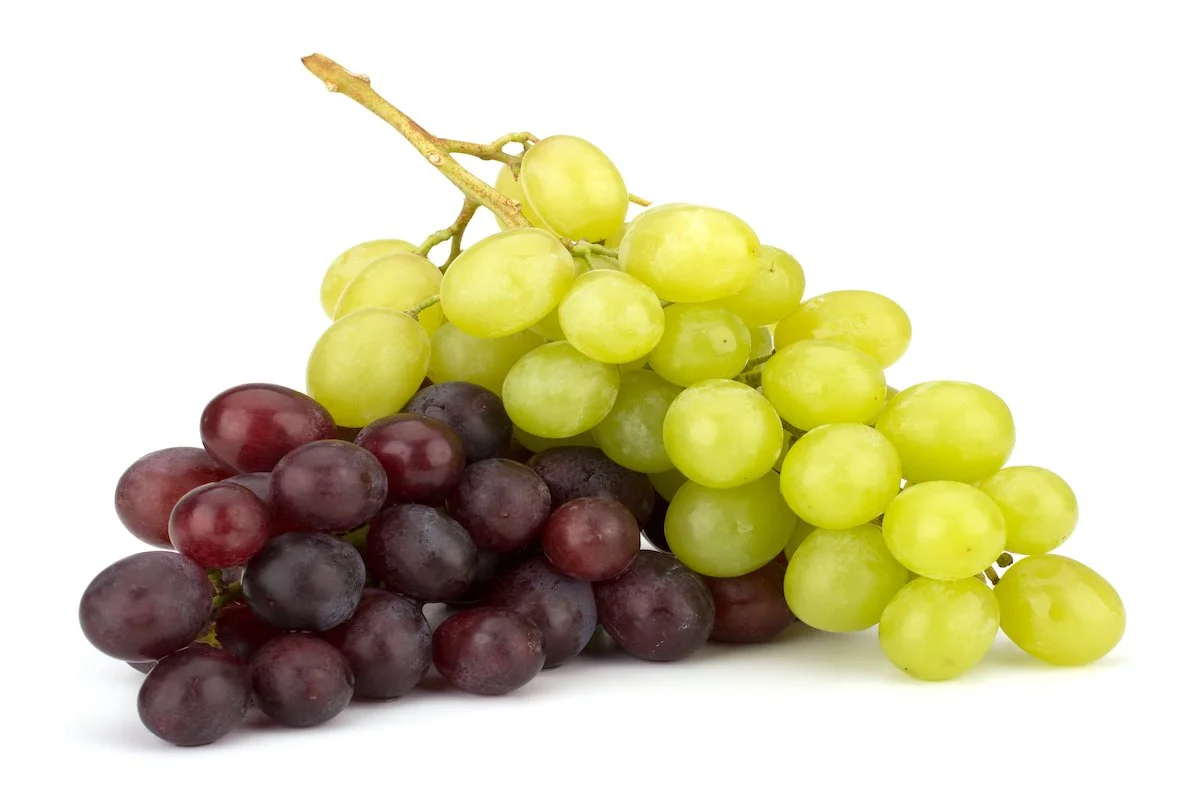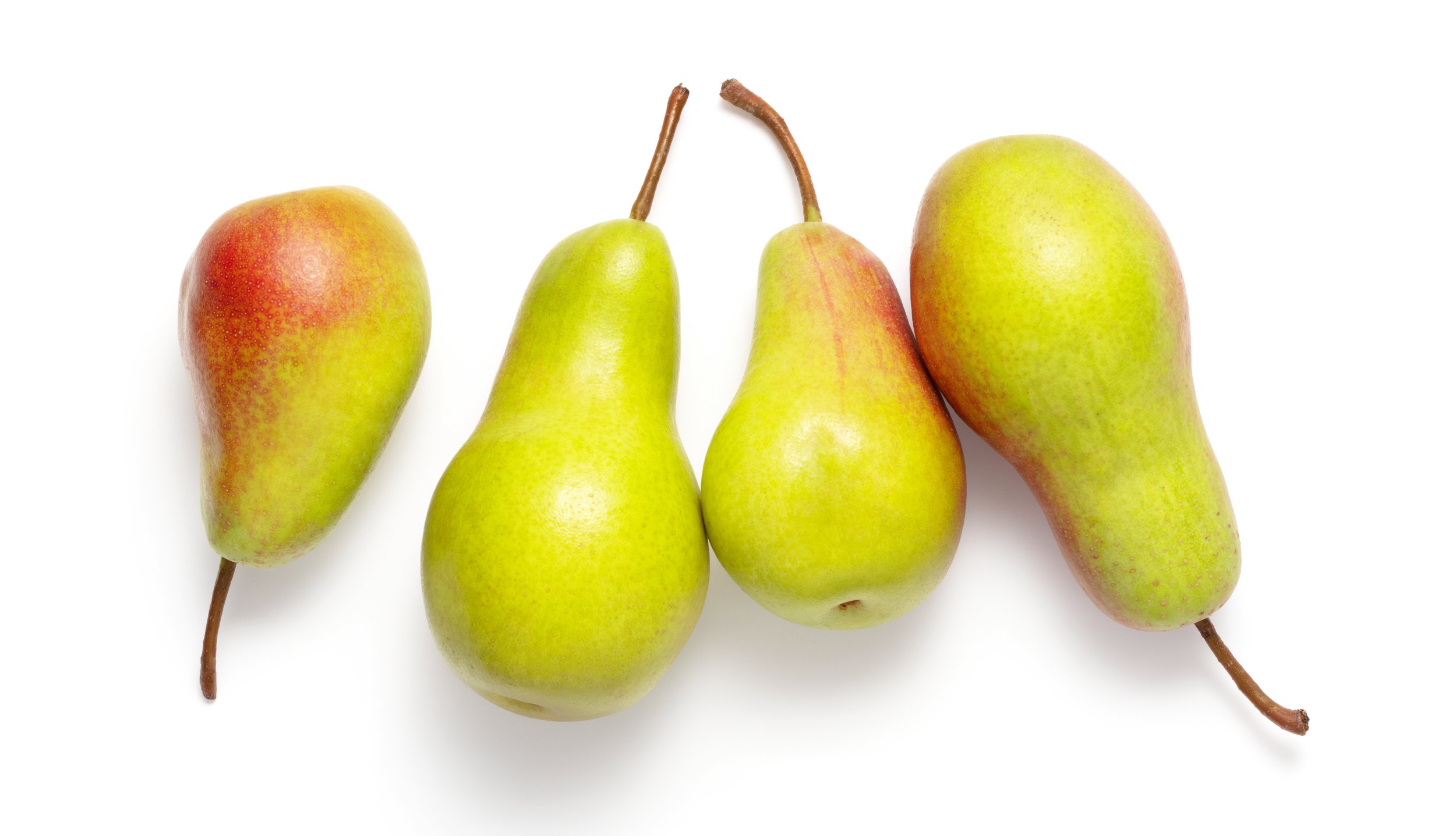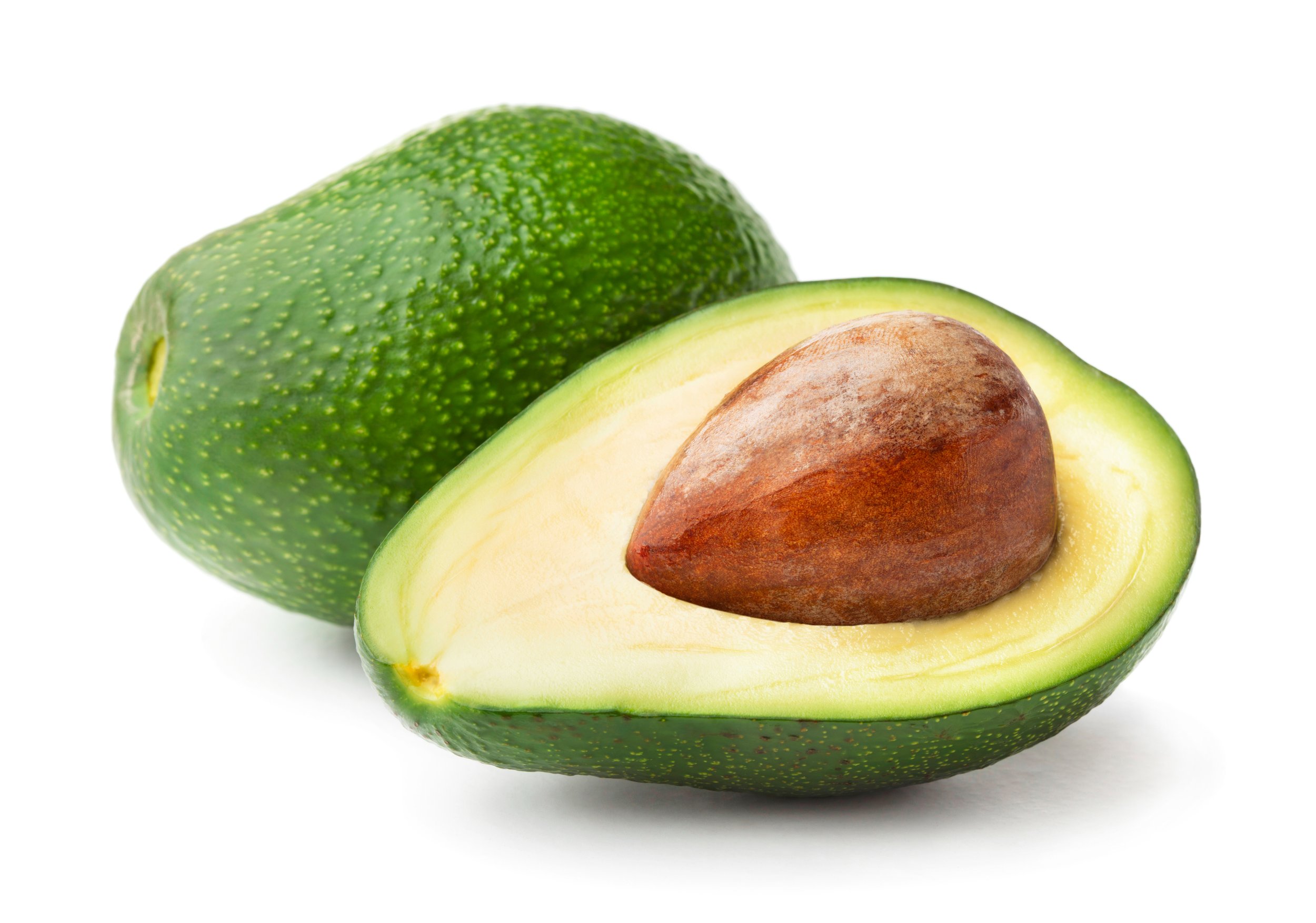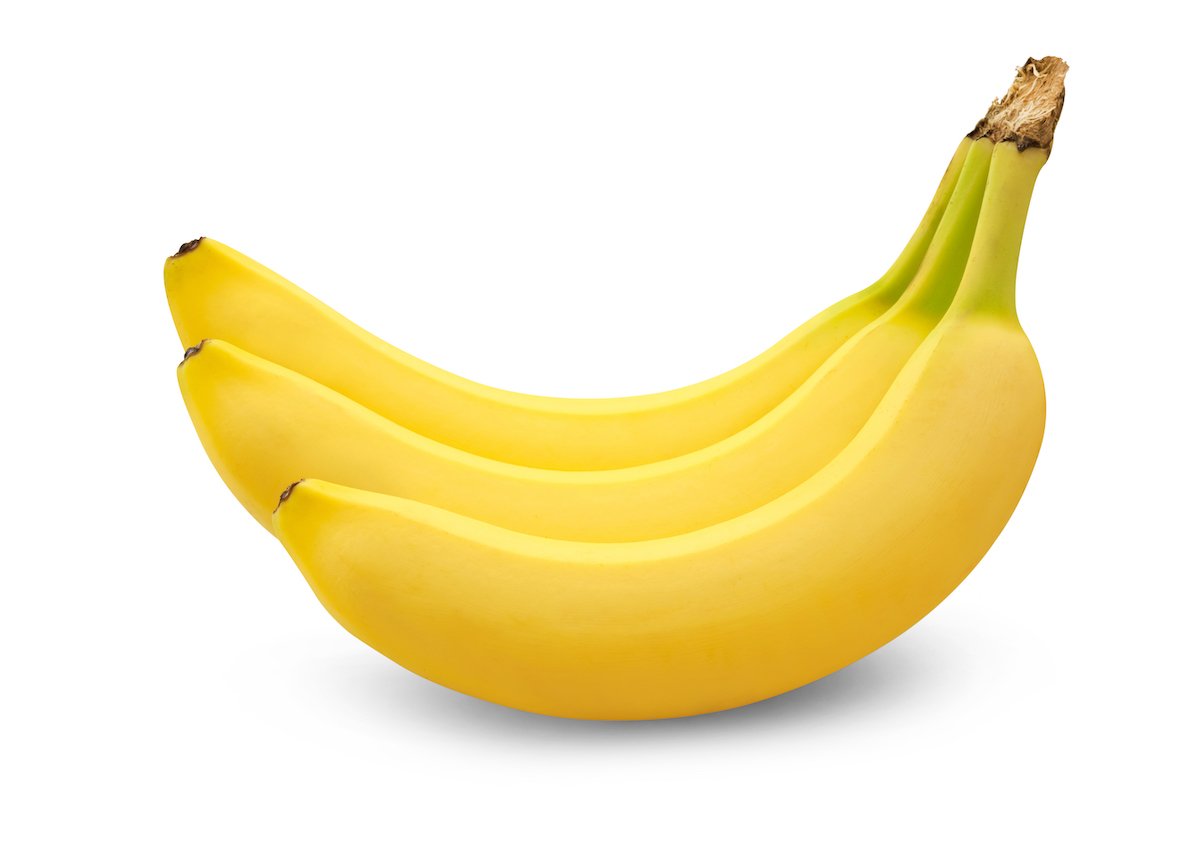Produce Product Knowledge - Potatoes
Languages: English
Media Editing: The video module(s) in this subject are editable under our Content Studio offering unless otherwise indicated. For more information about Content Studio, contact your CSM.
Description: Potatoes are a popular ingredient that can be used in many different dishes. It’s important that employees can help customers properly select the right potato for their needs and explain how to choose and store fresh potatoes. In this subject, users will learn how potatoes are categorized based on their texture, as well as how to tell different types of potatoes apart. They’ll also learn what types of potatoes are best for certain types of dishes and cooking practices so they can share this information with customers.
Languages: English
Media Editing: The video module(s) in this subject are editable under our Content Studio offering unless otherwise indicated. For more information about Content Studio, contact your CSM.
Description: Potatoes are a popular ingredient that can be used in many different dishes. It’s important that employees can help customers properly select the right potato for their needs and explain how to choose and store fresh potatoes. In this subject, users will learn how potatoes are categorized based on their texture, as well as how to tell different types of potatoes apart. They’ll also learn what types of potatoes are best for certain types of dishes and cooking practices so they can share this information with customers.
Languages: English
Media Editing: The video module(s) in this subject are editable under our Content Studio offering unless otherwise indicated. For more information about Content Studio, contact your CSM.
Description: Potatoes are a popular ingredient that can be used in many different dishes. It’s important that employees can help customers properly select the right potato for their needs and explain how to choose and store fresh potatoes. In this subject, users will learn how potatoes are categorized based on their texture, as well as how to tell different types of potatoes apart. They’ll also learn what types of potatoes are best for certain types of dishes and cooking practices so they can share this information with customers.
Topics
General Characteristics and Care of Potatoes
-
While there are various types of potatoes, they can all be categorized into three main groups: starchy, waxy, and all-purpose. In this topic, users will learn about the unique qualities of each of these groups and how they affect what the potatoes should be used for. They’ll also learn how to tell if a potato is fresh, how to properly store potatoes so they stay fresh, and the answers to some common customer questions so they can give customers the best experience possible.
-
Questions (level 1, 2, 3)
Video module
PDF module (This module was created in a tool that is not supported by our Content Studio offering.)
-
This topic is currently available in English.
-
There are three main categories of potatoes: starchy, waxy, and all-purpose.
Starchy potatoes, like russet potatoes, have a lot of starch, little moisture, and dry flesh and skin. This means they break down and absorb liquids easily, making them ideal for mashing, roasting, baking, or frying.
Waxy potatoes, like red or fingerling potatoes, have little starch, lots of moisture, creamy flesh, and thin skin. This means they don’t need to be peeled and will hold their shape when cooked, making them useful for stews, soups, casseroles, and salads.
All-purpose potatoes, like white or purple potatoes, are a combination of starchy and waxy potatoes. They contain a medium amount of starch and moisture, have thin skin, and will hold their shape when cooked, making them very versatile and able to be used in a variety of dishes.
A fresh raw potato will be firm, smooth, and clean with no cracks, bruises, or discoloration on its skin.
If a raw potato feels soft or mushy, smells musty, or has mold, or shriveled or wrinkly skin, it has gone bad and should be thrown out.
Store raw potatoes in a cool (45-50 °F / 7-10 °C), dry, dark, well-ventilated place. When stored properly, they can stay fresh for several weeks.
Advise customers to wash their potatoes before cooking them, not before storing them; the water and moisture can cause the potatoes to spoil quicker while they’re being stored.
If a potato has begun sprouting and the sprouts are small, customers can remove the sprout(s) before cooking the potato.
If a potato has slightly green parts, customers can remove them before cooking. This happens if the potato is exposed to too much light and can cause the potato to taste bitter.
Some fresh potatoes may have a “hollow heart”, which is a dark-colored hole in the center. This is caused by environmental stressors during growing; the potato is still safe to eat.
Preview of PDF module for “General Characteristics and Care of Potatoes”.
Starchy and All-Purpose Potatoes
-
There are many different varieties of potatoes. In this topic, users will learn about some of the most common types of starchy and all-purpose potatoes, including russet, white, purple/blue, and Yukon gold. They’ll also learn what a sweet potato is.
-
Questions (level 1, 2, 3)
PDF module (This module was created in a tool that is not supported by our Content Studio offering.)
-
This topic is currently available in English.
-
A russet potato is a medium--to-large type of starchy potato that has an oblong shape with rough brown skin and white flesh.
Russet potatoes are good for mashing, baking, and frying since they are crispy on the outside but stay soft on the inside when cooked.
Sweet potatoes (“yams”) are starchy root vegetables, but they are not potatoes nor yams. Typically, they have red-brown skin and dense, orange flesh with a sweet taste.
A white potato is a small-to-medium type of all-purpose potato that’s round or an oval shape with thin, white/tan skin and white flesh.
White potatoes don’t have to be peeled, have a velvety texture, and will hold their shape when cooked, allowing them to be used for a variety of uses like mashing, steaming, salads, sautéing, etc.
A Yukon gold potato is a combination of a white and yellow potato. It has smooth, thin, golden tan skin and yellow flesh.
Yukon gold potatoes have a buttery flavor and creamy texture, and they are a popular choice for mashing, roasting, stewing, or frying.
A purple or blue potato is a small-to-medium type of all-purpose potato with dark purple, blue, or slightly red skin and purple, blue, pink, or white flesh depending on the variety. It can range from oblong to fingerling in shape.
Purple or blue potatoes will maintain their shape and some of their color when cooked. Their moist but firm texture makes them good for a variety of uses like salads, baking, roasting, or grilling.
Preview of PDF for “Starchy and All-Purpose Potatoes”.
Waxy Potatoes
-
Waxy potatoes are low in starch but high in moisture, allowing them to hold their shape when cooked. In this topic, users will learn about some of the most common types of waxy potatoes, including red, yellow, fingerling, and new/petite/baby potatoes.
-
Questions (level 1, 2, 3)
PDF module (This module was created in a tool that is not supported by our Content Studio offering.)
-
This topic is currently available in English.
-
A red potato is a small-to-medium type of waxy potato with thin, red skin and white flesh. It’s typically round or oblong in shape.
Red potatoes are not very starchy and will hold their shape when cooked, making them great for baking, grilling, steaming, stewing, or in soups or salads.
A yellow potato is a small-to-large type of waxy potato with smooth, yellow-gold skin and yellow-gold flesh that comes in a variety of shapes and sizes.
Yellow potatoes have a rich, buttery flavor and aren’t as firm as red potatoes, so they’re best served grilled, baked, roasted, mashed, or in salads.
A fingerling potato is a small, oblong type of waxy potato that is shaped like a finger. It can have a variety of skin and flesh colors.
Because of their waxy, firm texture, fingerling potatoes should be pan fried, sautéed, baked, roasted, or in a salad.
A new (baby, petite) potato is a potato that is harvested before it reaches maturity. This gives them their small size (like a marble), thin, waxy skin, and creamy flesh.
New (baby, petite) potatoes come in several varieties and will have the same color, shape, and flavor as their larger, mature equivalents.
New (baby, petite) potatoes don’t need to be peeled or chopped and are good for roasting, pan frying, and using in salads.
Preview of PDF for “Waxy Potatoes”.

